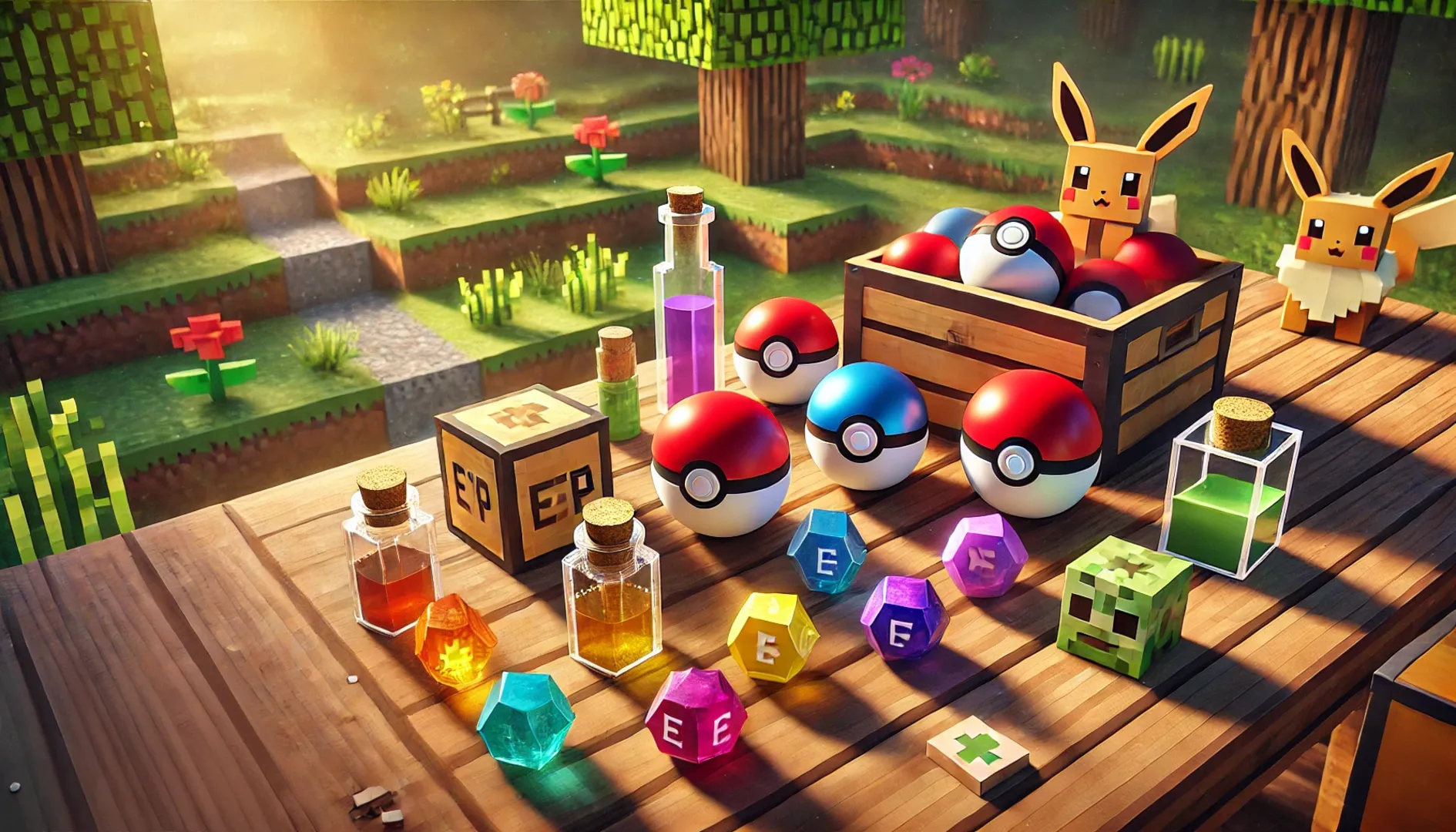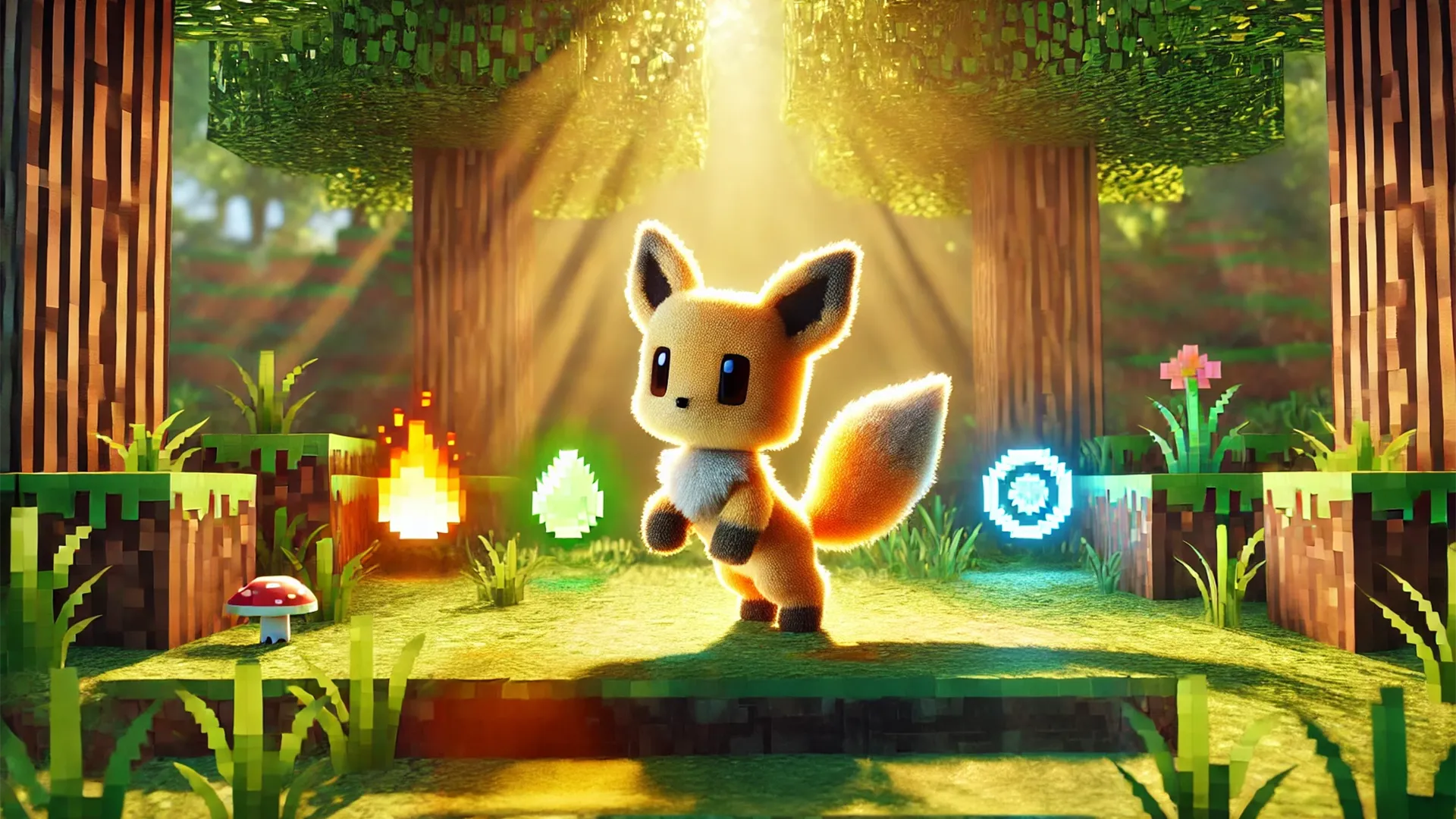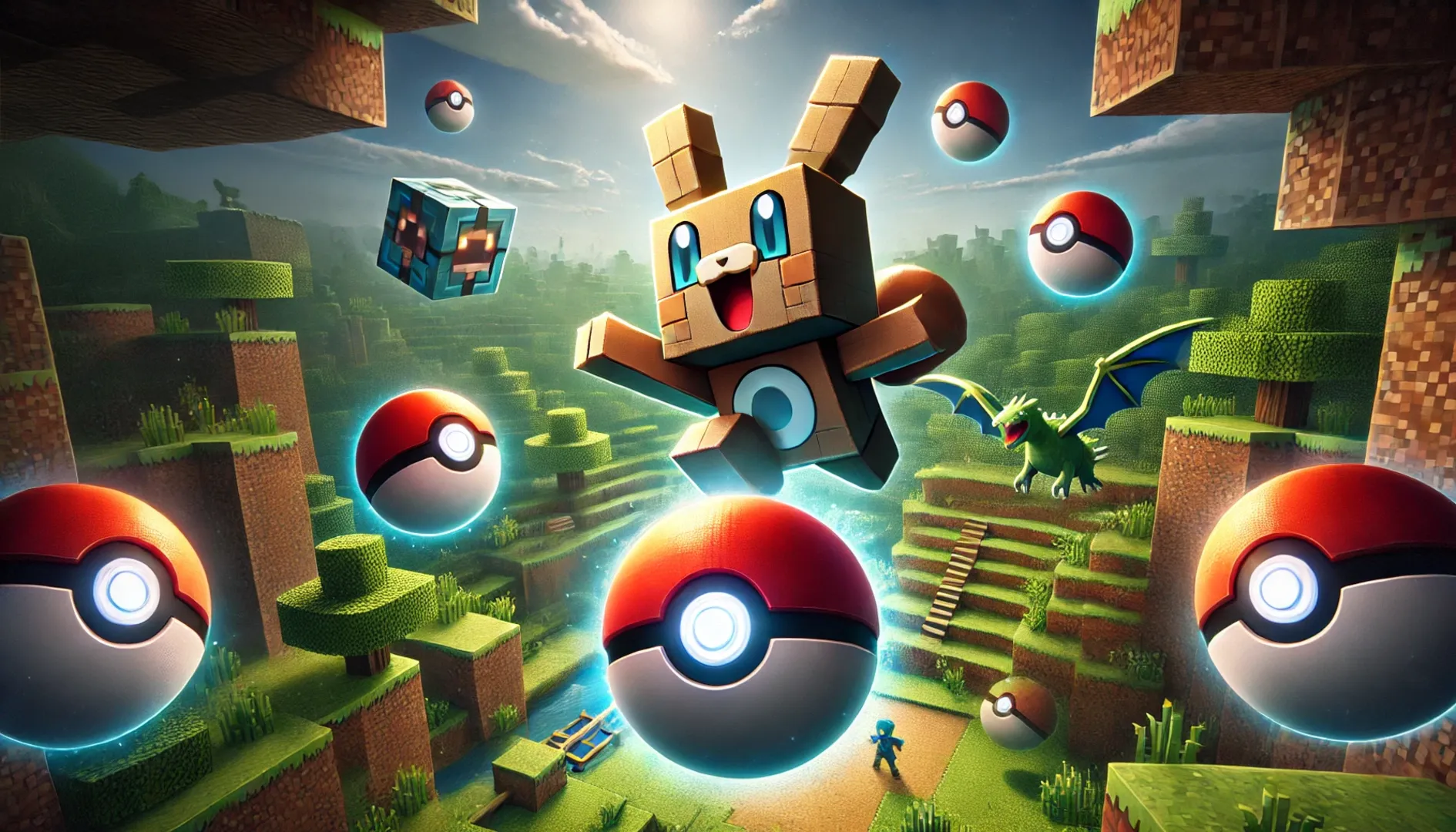Cobblemon offers a world of adventure, filled with countless Cobblemon to catch and train. To make the most of your journey, certain items are absolutely essential for every trainer. From capturing elusive Cobblemon to evolving and leveling up your team, having the right items can streamline your gameplay and keep your Cobblemon ready for action. In this guide, we’ll break down the top five essential items, along with tips on how to find and effectively use each one.
1. Poké Balls
Poké Balls are the first tool every trainer needs to capture Cobblemon, and their various types cater to different capturing needs. Understanding which Poké Ball to use and where to find them can give you a significant advantage when catching tougher Cobblemon.
- Key Poké Ball Types:
- Poké Ball: Basic capture rate, suitable for lower-level or common Cobblemon.
- Great Ball: A step up from the standard Poké Ball, with a better capture rate, ideal for mid-level Cobblemon.
- Ultra Ball: Has one of the highest capture rates, useful for rare or high-level Cobblemon.
- Quick Ball: Works best when used at the beginning of a battle, increasing the chance of a quick capture.
- Dusk Ball: More effective at night or in dark areas like caves, making it a smart choice for exploring underground biomes.
- Net Ball: Specially effective for Water- and Bug-type Cobblemon.
- Where to Find Poké Balls:
- Crafting: Cobblemon allows players to craft Poké Balls using apricorns and iron. Apricorns can be harvested from trees commonly found in forested biomes. Once gathered, use an anvil to combine apricorns with iron discs to create Poké Ball parts. Crafting is a cost-effective way to ensure you’re always stocked.
- Village Shops: Many villages have NPC vendors who sell Poké Balls. While some shops may carry only basic types like Poké Balls and Great Balls, specific villages might have a wider range or even specialty Poké Balls.
- Loot Chests: Poké Balls, especially specialty types, can be found in chests within dungeons, temples, and ruins, which are scattered throughout the Cobblemon world. Exploring these structures is a great way to find rare Poké Balls and save resources.
2. Healing Items
Healing items are essential for keeping your team in peak condition, especially during long explorations where wild encounters or trainer battles may wear down your Cobblemon. Having these items on hand can prevent unnecessary trips back to healing stations and keep your team in fighting shape.
- Types of Healing Items:
- Potions and Super Potions: These items restore HP and are perfect for quick recovery during field exploration.
- Revives: Bring fainted Cobblemon back into battle, ideal for tougher battles or raids where Cobblemon might faint.
- Full Heals: Cure status conditions such as poison, paralysis, sleep, or burn. Keeping Full Heals on hand can be especially useful if you encounter Cobblemon with annoying status-inflicting moves.
- Where to Find Healing Items:
- Loot in Dungeons and Temples: Many healing items are found as loot in dungeons, temples, and ruins. Exploring these areas can yield a variety of healing supplies, from basic Potions to powerful Max Potions.
- Crafting Options: Certain healing items can be crafted with herbs and berries found in the wild. For example, antidotes can be made using certain ingredients that grow in forest or plains biomes, offering a sustainable way to maintain a supply of status cures.
- Village Vendors: Cobblemon vendors in villages often sell Potions and other healing items. Poké Centers in certain towns may also stock a wider variety of healing supplies.
3. EXP Share
The EXP Share is an invaluable tool for trainers aiming to level up an entire team efficiently. When equipped, it distributes experience points to all Cobblemon in the party, even those that didn’t participate in battle. This is particularly useful when training newly captured Cobblemon or leveling up a full team simultaneously.
- How EXP Share Works:
- When a Cobblemon holds the EXP Share, all Cobblemon in the party gain experience points after each battle. This item allows trainers to quickly level up lower-level Cobblemon without needing them to battle directly.
- Using EXP Share ensures balanced leveling across the team, making it easier to train Cobblemon that may struggle in battles due to low defense or other limitations.
- Where to Find EXP Share:
- Loot in High-Level Dungeons or Raids: The EXP Share is often found as rare loot in challenging dungeons or high-tier raids. These raids usually feature powerful Cobblemon as the final boss, offering rewards that may include the EXP Share.
- Server Events or Competitions: Some Cobblemon servers hold events, tournaments, or competitions where EXP Shares are offered as prizes. Participating in these can be a rewarding way to obtain rare items while engaging with other players.
4. Lucky Egg
The Lucky Egg increases experience gain from battles, making it one of the best items for speeding up the leveling process. When held, this item provides an XP boost, allowing trainers to quickly raise a specific Cobblemon's level.
- Benefits of Using Lucky Egg:
- By holding the Lucky Egg, Cobblemon gain extra XP from battles, making it ideal for trainers looking to power level a particular Cobblemon.
- Combining the Lucky Egg with the EXP Share can result in highly efficient leveling, especially when paired with powerful Cobblemon that can take on high-level wild encounters or trainer battles.
- Where to Find Lucky Egg:
- High-Tier Loot Chests: Lucky Eggs can be found in rare loot chests within structures like ruins, temples, and other challenging dungeons. These areas typically contain high-value items, including experience-boosting items.
- Raid Rewards: The Lucky Egg is sometimes dropped as a reward in raid battles, especially when fighting high-level or legendary Cobblemon.
- Specific Biome Locations: Some biomes have structures like jungle temples or desert ruins, where the Lucky Egg might spawn in loot chests. Exploring uncommon biomes or event-specific areas may increase your chances of finding one.
5. Evolution Stones
Many Cobblemon require evolution stones to reach their final form, making these stones essential for trainers seeking to complete their team or optimize Cobblemon stats. Each evolution stone is suited to specific Cobblemon types and has unique evolution requirements.
- Types of Evolution Stones:
- Fire, Water, Thunder Stones: Commonly used for classic elemental evolutions, such as Eevee into Vaporeon or Flareon.
- Leaf and Ice Stones: Used to evolve specific Cobblemon that favor natural environments, like Leafeon or Glaceon.
- Moon and Sun Stones: Ideal for Cobblemon that have day-night based evolutions, often enhancing fairy-like or mystical Cobblemon.
- Where to Find Evolution Stones:
- Mining in Rocky or Cave Biomes: Many evolution stones can be found by mining in rocky or cave biomes, where glowing or unusual stone clusters may indicate the presence of an evolution stone.
- Rare Loot in Temples and Ruins: Certain dungeons or ruins may house evolution stones as part of their rare loot. Exploring these structures in forest, desert, or jungle biomes can yield valuable rewards, including evolution stones.
- Special Locations: Some stones, like the Leaf Stone or Ice Stone, can be located near specific environmental markers, such as Mossy Rocks or Icy Rocks. Mossy Rocks are typically found in dense forests, while Icy Rocks appear in snowy biomes.
Additional Tips for Using Essential Items Effectively
- Stock Up on Essentials: Regularly restocking your Poké Balls, healing items, and evolution stones can make all the difference during exploration. Crafting, exploring, and visiting villages frequently ensures you’re always ready for encounters.
- Use Specialty Poké Balls Strategically: With many types of Poké Balls, know which situations maximize your success rates. Dusk Balls work best at night, Dive Balls are ideal near water, and Quick Balls are effective at the start of encounters.
- Combine Lucky Egg with High XP Areas: Using the Lucky Egg in high-XP biomes or during event-based XP multipliers can lead to faster leveling, especially when battling wild Cobblemon with high base XP yields.
- Save EXP Share for Bulk Leveling: If you’re working on leveling multiple Cobblemon, use EXP Share on weaker Cobblemon while focusing on high-level encounters. This allows you to efficiently distribute experience to those in need of training.
- Time Evolution Stone Use for Optimal Abilities: Some Cobblemon learn exclusive moves before evolution. If you plan to use an evolution stone, check for any must-learn moves first, as evolving early may limit certain move options.
Conclusion
Equipped with these essential items, you’ll be better prepared to capture, train, and evolve your Cobblemon, enhancing your team’s strength and versatility. By knowing where to find each item and understanding their unique benefits, you can navigate the Cobblemon world with confidence and efficiency. Whether you’re capturing elusive Cobblemon, leveling up your team, or evolving them to their fullest potential, having these items will streamline your journey.
What items do you find most essential in your Cobblemon experience? Let us know in our Discord and share any special tips you have for using them effectively!



